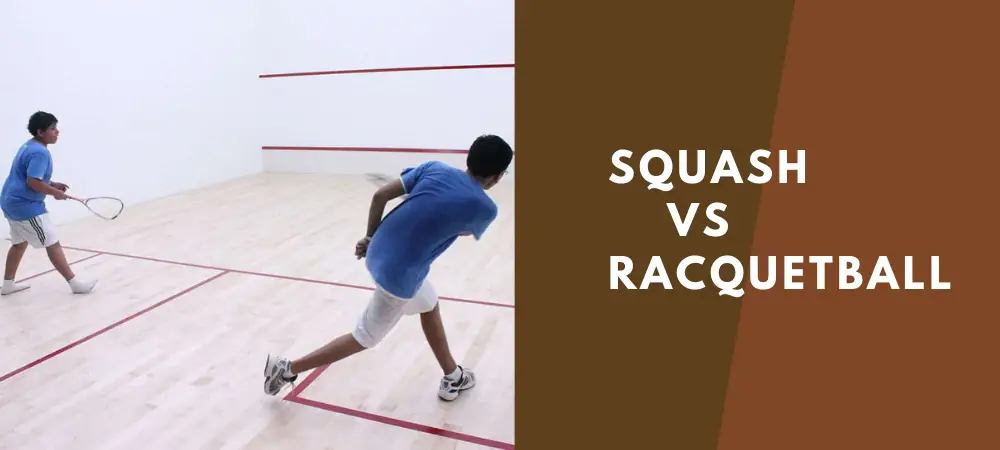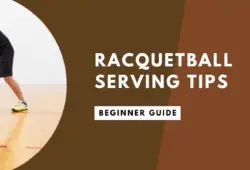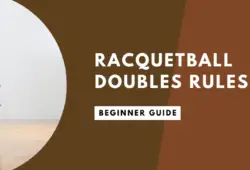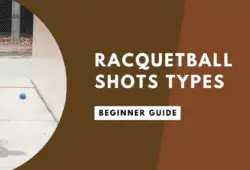Some people are of the opinion that squash and racquetball are one and the same thing.
Well, bring the wrong racquet to a game of either sport, and you will be quick to learn that the two games are indeed very different.
Squash and racquetball are both racket sports played on an enclosed court.
Both games require a high level of physical fitness, and to the untrained eye, yes, you will indeed think that they appear quite similar.
Players or spectators of either game will beg to disagree, though.
As you shall come to see, though they might look like the same thing, there are several differences between the two sports.
Table of Contents
Which Sport Came First?
While squash came to be in 1830, racquetball was invented in the late 1940s.
Squash was actually accidentally invented at a prestigious English Public school known as Harrow school and located just outside of London.
On the other hand, racquetball was purposefully invented by one Joseph G. Sobek, who sought to make handball less hard on his hands.
As a result, he ended up playing handball using paddles, thereby inventing a game known as “paddle racquets.”
This new game combined the rules of squash and handball and is what later on came to be known as racquetball; in 1969.
So, there you have it; squash came before racquetball.
The former is the creation of English schoolchildren, while the latter is the creation of an American handball player.
Squash vs Racquetball: What Are The Differences?
Governance
The International Racquetball Association administers racquetball. This body oversees all internationally sanctioned events and the various national organizations as well.
The Squash Federation governs squash. The Squash Federation has over 145 member federations, and it oversees the sport all over the world.
Nevertheless, we have countries where one body administers both sports. An example of this is England, where both racquetball and squash lie under the governance of England Squash.
Court
Racquetball courts are larger than squash courts.
One the one hand, squash courts measure 32ft x 21ft x 18.5ft (9.6m x 6.3m x 5.6m).
On the other hand, racquetball courts measure 40ft x 20ft x 20ft (12m x 6m x 6m).
Besides the size of the court, the playing surfaces vary as well.
When it comes to a racquetball court, you can play on every surface of the court, including the ceiling. Whereas hitting the ceiling isn’t allowed in squash.
Squash has more restrictions that racquetball regarding where the ball can reach.
In a squash court, there is an out-of-bounds area demarcated along the front and back walls. There is also a 19-inch high tin strip marking an out-of-bounds area at the base of the front wall.
Additionally, the side walls have diagonal boundary lines.
Racquetball is much less restrictive, seeing as even the ceiling is fair game.
Ball
A squash ball is noticeably smaller than a racquetball ball.
While the racquetball is about 6cm in diameter, the squash ball is 4cm in diameter and has less bounce.
The bouncier racquetball ball is, the more ferocious of the two, seeing as it is faster as well.
The balls used in both sports are hollow and made of rubber. However, the ball used in racquetball uses more elastic rubber, which is what makes it capable of more intense bouncing.
A squash ball is slightly heavier and denser, which is why it doesn’t bounce around as much.
Because the ball is much bouncier and can hit any surface, racquetball tends to be the faster-paced game.
Racket
Squash uses longer rackets that have a maximum allowed length of 27 inches. These rackets look much more like a badminton racket, and they have an open neck.
Racquetball rackets are shorter and have a maximum allowed length of 22 inches. The rackets resemble a tennis racket much more than a badminton racket, and they have a closed neck.
The stringed area is narrower on a squash racket and wider on a racquetball racket.
The variation in racket width is so that the rackets can cope with the respective balls seeing as a racquetball ball is significantly bigger than a squash ball.
Gear
In squash, much like in tennis, there’s typically no protective gear for the players.
On the other hand, in racquetball, the rules dictate that the players wear gloves and eye guards.
Adherence to this rule is more common in official tournaments, not necessarily in casual settings.
The reason why racquetball involves the use of protective gear while squash doesn’t might be attributed to the ferocious nature of the swing of the racket as well as the greater speeds of the ball.
Serving
While playing squash, the server is only allowed one try per turn. What this means is that there are no do-overs or mulligans like in racquetball.
When playing racquetball, suppose the server misses the first turn, or if their service ends up being faulty, they are allowed a second chance.
While serving in squash, you hit the ball while it’s in the air. You don’t let the ball bounce first before hitting it. Whereas in racquetball, the ball must bounce once before you strike it.
Racquetball allows the server to hit any part of the wall, but squash demands that the server hits the ball into one of the two service boxes.
Furthermore, a served ball in squash should hit the wall below the service line but above the tin line; before proceeding to land behind the shirt line.
While serving, a squash player must have at least one foot fully in the demarcated service box. They are then required to hit the ball into the opposite corner of the front wall.
While a racquetball player is serving, they can stand anywhere as long as it’s behind the service line.
A served ball in racquetball can hit anywhere on the front wall, after which the ball must bounce behind the “short line” for it to be in play.
Grip & Swing
When playing racquetball, the player uses a different grip for the forehand and backhand shots.
When playing squash, the player uses the same grip for every shot.
As a result, while you will need to rotate the racket slightly during a racquetball match, there is no such thing in squash.
Meaning, a squash player must find a comfortable grip that works best for both forehand and backhand shots
Because you use a constant grip throughout the game, the swing required when playing squash is slightly more complicated and takes a bit longer to learn.
When performing a squash swing, the racket goes from high to low then back to high.
On the other hand, a racquetball swing is easier to master because it merely involves more of a sideways arc.
Scoring
Both squash and racquetball require that a game be won with two clear points.
In racquetball, you can earn points regardless of whether you are serving or receiving. The best of three games wins a match.
However, if players tie two games to two games, then a tie-breaker is played up to 11 points.
In squash, you can only earn points if it is your turn to serve. The best of five games wins the match.
A regular squash match goes up to 9 points while a tournament match goes up to 11 points. On the other hand, racquetball matches go up to 15 points.
What Is Better Workout: Squash or Racquetball?
The differences here are more subjective, depending on which side of the argument one supports.
Squash is a game of skill and accuracy, while racquetball appears to prioritize power over all other elements.
It is generally perceived that racquetball is the more physically taxing sport.
This could be argued out from the angle whereby a racquetball ball is much bouncier, which thereby leads to a faster-paced game when compared to squash.
As a result, racquetball is generally harder and more physically demanding at an amateur level.
On the other hand, another school of thought is that squash is the more physically taxing gam. This is seeing as the playing strategy involves moving an opponent off their spot on the court
Squash has a higher number of professional players worldwide, and this makes it more competitive in terms of how hard one has to work to keep up with the professional players.
As a result, squash is harder and more demanding at a professional level.
Which One Is More Popular and Where?
Squash is, without a doubt, the more popular sport between the two.
It commands a following of about 20 million people across the globe, while racquetball only has about 5.6 million players worldwide.
When you come to think about it, though, squash being more popular makes a lot of sense. Because after all, the game was in existence for over a century before racquetball came to be.
While squash boasts of a heritage spanning over 180 years, racquetball has only been around for 70 years.
Nevertheless, it is worth noting that the popularity of both games is on the rise. More and more people in different countries are continuously embracing both sports.
Squash is particularly popular in the United States, Egypt, and England as well, which is the birthplace of the sport.
Some of the world’s best squash players hail for Egypt, and this dominance dates back to the earlier days of squash being an internationally competitive sport.
Conclusion
Both squash and racquetball are exciting and dynamic games to play, and the great debate of which between the two is a better sport will continue to rage on.
However, as much as they appear to be similar, there are numerous differences between them, with some differences standing out more than others.
So, the next time the debate comes up, at least you shall have some facts to back up your argument.




